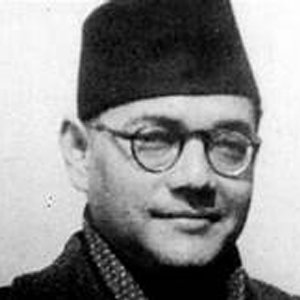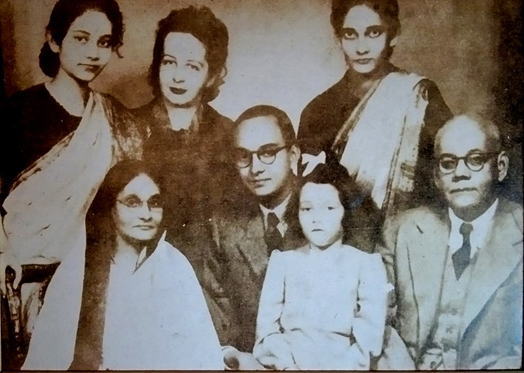Tribute: Remembering Netaji Subhas Chandra Bose

On the occasion of the 126th birth anniversary on January 23rd, 2022, of Netaji Subhas Chandra Bose, Partha Sircar offers a tribute to his memory.
As an ardent admirer of Netaji, I am appalled to see very little coming out on the great man in the public domain. His mission and vision, his achievements from his early days in Congress, and his exemplary work in building up the Indian National Army (INA) seem to have been disregarded.
People have started forgetting who Netaji Subhas Chandra Bose was or what his claim to fame was. He was, by all accounts, at the forefront of the independence struggle for two decades before he left the country in 1941. He had a major hand in numerous policy issues including forming the National Planning Committee in the late 1930s, was the Congress president on two occasions, and played a major balancing role between choosing non-violence versus military action and more aggressive forms of fighting for independence. He had gained the hearts of his countless countrymen for his exemplary patriotism.
There appears to be even less knowledge in our national consciousness regarding Netaji's activities in Germany, and then later—and more importantly—in southeast Asia. His trip by submarine from Germany to Japan is the stuff for legends. He built a huge movement, the Indian National Army (INA), almost solely from Indian expatriates and POWs in Japanese camps. His arena of activity spread over Burma, Thailand, Malaysia and Japan. He attracted some brilliant talent during that time like Abid Hasan, A. C. N. Nambiar, Shah Nawaz Khan, and Lakshmi Sahgal, who all later served as ministers or ambassadors in independent India.
There is no shortage of authoritative information on the life and achievements of the great man. There are several biographies on him in English, Bengali and possibly other languages. I can readily name two which I have read: Brothers Against the Raj: A Biography of Nationalists Sarat & Subhas Chandra Bose by Professor Leonard A. Gordon, and His Majesty's Opponent: Subhas Chandra Bose and India’s Struggle Against the Empire by Professor Sugata Bose of Harvard who is also a member of the Bose family. Both books provide extensive coverage of his life, mission and vision. There is also an extensive 12-volume collection of Netaji’s writings and a distilled version of these writings compiled by Sisir Bose along with Sugata Bose. Sisir Bose also founded the Netaji Research Bureau in Netaji Bhavan (Netaji’s ancestral home) in Kolkata which is a valuable resource of many useful books and publications on him, both old and new. But few seem to read or care about them. Instead, what comes out in books and newspaper articles is replete with conspiracy theories—the tired old rhetoric of how he did not die in the 1945 plane crash while traveling from Japan.

There has been so much written about his life after the plane crash. Some have said he was incarcerated in China, some said it was in Manchuria, and most said it was in Siberia in Russia. One recent piece of information claims that he was not actually behind bars in Siberia but was an honored guest of Stalin serving some important function. Many years ago, he was believed to have been sighted as a sadhu in Shoulmari in North Bengal. Later in 1965, he was said to have been sighted among the Soviet soldiers during Lal Bahadur Shastri’s visit to the USSR in 1965. But his crowning “performance” has been as Gumnami Baba (aka Bhagawanji), a reclusive sadhu in Faizabad in UP. The Baba allegedly did not come out of hiding for over 30 years, hiding not only from Nehru but also from Indira Gandhi. He finally died in 1985. All the events noted above are replete with “convincing” evidence ranging from radio broadcasts, letters in Netaji’s handwriting, along with Netaji’s personal belongings being recovered from Gumnami Baba. The evidence often appeared credible, even impressive. Some made careers out of these incidents with their books, TV broadcasts and newspaper reports.
Then there are the never-ending discussions about the “mystery” of his marriage and his daughter. Much of the information, it appears to me, is built on nothing but hearsay. I hold a similar view about Netaji’s marriage to the German woman, Emily Schenkl, which resulted in the birth of his daughter, Anita. Conspiracy theories are rife that his marriage and his daughter are rumors planted by his detractors. Fingers are generally pointed towards Nehru, Gandhi and the Congress. They disregard the fact that Sarat Chandra Bose, his elder brother, visited Vienna with his family and met Schenkl and Anita. Also, Anita visited the Bose family in Kolkata and, from what I have read, had a fair welcome.
Then, there is the debate around the relationship between Bose and Gandhi who are believed to have been at odds with each other. Perhaps this is overblown and provides food for idle gossip. Of note is the fact that two of the battalions in the INA were named after Gandhi and Nehru.
Little has changed even after the release of the previously classified files under the aegis of the West Bengal and Central governments in late 2015 amid great expectations and a lot of brouhaha. Very little of substance has come out of them in the last six years.
Ashish Roy, an established journalist for CNN and a member of the Bose family, has attempted to address the matter of Netaji’s death in his latest book, Laid to Rest: The Controversy Over Subhas Chandra Bose’s Death. There is also the testimony of Netaji’s trusted lieutenant Habib-ur-Rahman who was in the same plane and got burnt with him. All his trusted lieutenants in the INA—Abid Hasan, Kayani, A. C. N. Nambiar, Lakshmi Sehgal, and others—to whom Netaji meant so much, reluctantly accepted his death in the plane crash. Sarat Chandra Bose, his elder brother who was almost a father figure to Netaji and a major Congress leader in his own right, also painfully accepted his death in the plane crash.
I wonder what makes us give importance to these conspiracy theories. The escape from the plane crash, the incarceration in the Russian prison, or his hiding from Nehru and Indira Gandhi as Gumnami Baba are not what earned him our universal adulation and made him our Netaji. To me, an exaggerated emphasis on these issues takes away the focus on the mission and the vision of Netaji, his achievements in the Congress, and his formation of the INA. The present and future generations are thus deprived of a fuller appreciation of this great man. I worry that this would most likely result in a diminished image of him in the future Indian psyche.
A retired civil engineer based in Concord, California, Partha Sircar enjoys freelance writing. He can be reached by e-mail at psircar@yahoo.com.
Enjoyed reading Khabar magazine? Subscribe to Khabar and get a full digital copy of this Indian-American community magazine.
blog comments powered by Disqus












